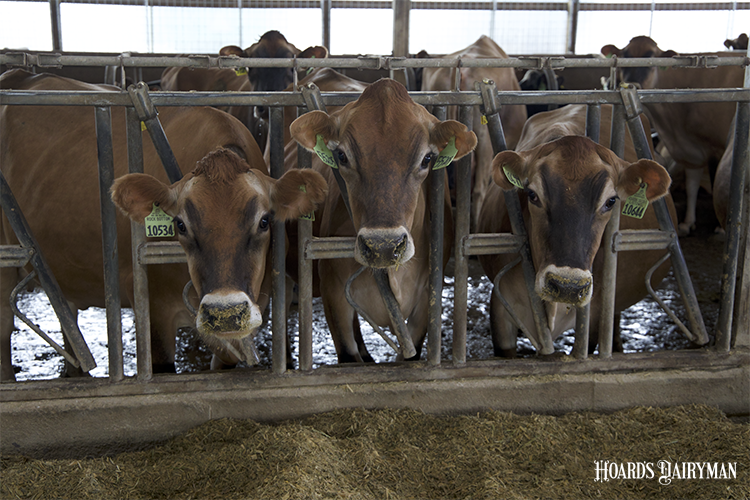
For both crops and animals, timing often means everything on a farm. Following the appropriate timeline can be the difference between a healthy outcome and one that fails. On the cow side, that means providing care that leads to a desirable lactation cycle.
Outside of measures to improve pregnancy rate, and because gestation length is fixed, farmers have two choices when structuring their cows’ lactations: voluntary waiting period (VWP) and length of the dry period. The most common length for both is generally 60 days. However, some variation exists from farm to farm based on herd demographics, reproductive performance, and management choices. During the Dairy Cattle Reproduction Council annual meeting, Victor Cabrera presented research that looked into how various VWP and dry period lengths interact with each other and affect cow health.
Cabrera, a professor at the University of Wisconsin-Madison, described that VWP may vary for a number of reproductive reasons, but in the case of first-lactation cows specifically, a longer VWP is possibly believed to result in better production. “The reasoning is first-lactation cows have a much more persistent lactation curve,” he said.
A farm might choose a shorter dry period to reach more days in milk in the current lactation. That has also been shown to lead to better reproduction but less milk in the next lactation, Cabrera explained. On the other hand, a longer dry period might be chosen for fewer days in milk and lower feed costs now, but it can lead to greater health risks in the future.
Nine possibilities analyzed
To examine how these choices affect cow health and farm profitability, Cabrera explained their analysis of animals that went through two dry periods and two VWPs in one of nine treatments. The cows experienced dry periods that were short (20 to 30 days), conventional (50 to 60 days), or long (80 to 90 days) and then VWPs that were short (60 days), long (88 days), or a combination (88 days for first-lactation cows and 60 days for older cows).
Among the notable results was that longer dry period length was associated with lower subsequent pregnancy per A.I. When cows had a short dry period, feed efficiency suffered at the end of lactation. Cabrera also noted that the least culling was observed in the group that had the combination of short and long VWP and a 60-day dry period.
His team then conducted a profitability analysis for each scenario. The long VWP and 60-day dry period was the most expensive combination, while the long VWP and short dry period showed the best return in their calculations. And although the short VWP and short dry period first-lactation cows experienced the best pregnancy rate, calving interval, and days open, this plan was the fourth-best option in profitability.
When income over feed cost was calculated, the 60-day VWP and 60-day dry period was the most profitable option, Cabrera concluded. Not every farm will use these standard lengths, but this research is a good reminder that both VWP and dry period length can have significant impacts on the farm business, both this year and next.








